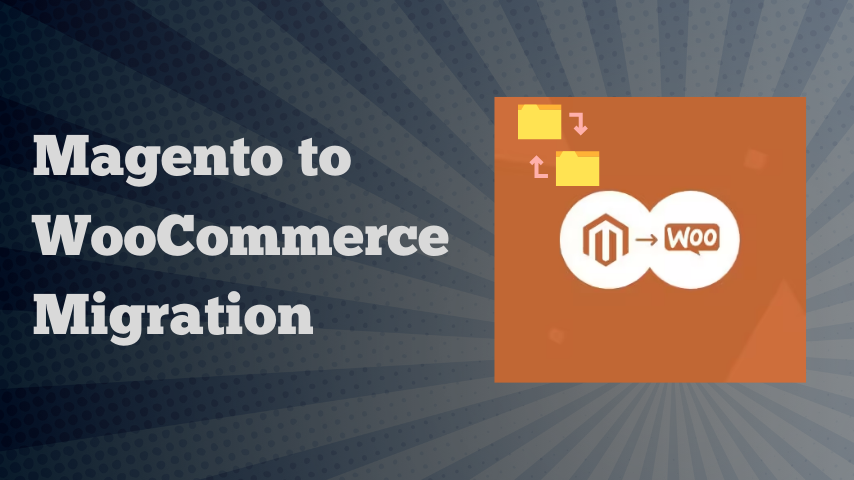Transitioning your eCommerce platform is a big decision, but if you’re moving from Magento to WooCommerce, it could be the best move for your business. WooCommerce’s flexibility, cost-efficiency, and user-friendliness make it an ideal choice for store owners seeking better scalability and customization options. In this guide, we’ll explore how to migrate from Magento to WooCommerce seamlessly, key benefits, and tips to ensure success.
Whether you’re switching to improve usability or reduce operational costs, this guide will make the process straightforward and hassle-free.
Table of Contents
- Why Choose WooCommerce Over Magento?
- Pre-Migration Checklist
- How to Migrate from Magento to WooCommerce: Step-by-Step
- Benefits of WooCommerce for eCommerce
- Common Migration Challenges and How to Overcome Them
- Finalizing Your WooCommerce Store
- FAQs
Why Choose WooCommerce Over Magento?
Magento and WooCommerce are both popular platforms, but their differences can significantly impact your business. Here’s why WooCommerce often takes the lead:
1. Cost-Effectiveness
Magento can be expensive, especially if you opt for Magento Commerce. WooCommerce, on the other hand, is free to use and comes with affordable extensions and themes.
2. User-Friendly Interface
WooCommerce is beginner-friendly, with an intuitive interface that allows non-technical users to manage their stores effortlessly. Magento requires advanced coding knowledge, which can increase development costs.
3. Extensive Customization
WooCommerce integrates seamlessly with WordPress, giving you endless customization possibilities, including themes, plugins, and SEO tools.
4. Hosting Flexibility
With WooCommerce, you can choose any hosting provider that meets your needs. Magento often requires more resource-intensive hosting, leading to higher costs.
5. Scalability for Growing Businesses
WooCommerce provides scalable options for stores of all sizes, making it ideal for businesses looking to grow without hefty infrastructure upgrades.
Pre-Migration Checklist
Before starting the migration process, it’s essential to prepare your store:
1. Analyze Your Current Store
- Audit your Magento store’s data, including products, categories, customer information, and orders.
- Identify extensions or functionalities that you’ll need in WooCommerce.
2. Choose a Hosting Provider
Select a reliable WordPress hosting provider optimized for WooCommerce. Popular choices include SiteGround, Bluehost, and WP Engine.
3. Backup Your Magento Store
Create a full backup of your Magento store, including its database and media files, to ensure data security during migration.
4. Plan Your Design
Choose a WooCommerce theme that aligns with your brand. Decide whether you’ll replicate your Magento store design or adopt a new look.
How to Migrate from Magento to WooCommerce: Step-by-Step
Step 1: Install WooCommerce on WordPress
Set up a WordPress site and install the Magento to WooCommerce plugin. Follow the setup wizard to configure your basic store settings, such as currency, payment methods, and shipping options.
Step 2: Use a Migration Tool
Several tools simplify the migration process, such as:
- Magento to WooCommerce Migration: Automates data transfer, including products, customers, and orders.
- FG Magento to WooCommerce: A plugin designed specifically for Magento to WooCommerce migrations.
Step 3: Export Data from Magento
- Export your Magento store data in CSV format.
- Include products, categories, customers, orders, and reviews.
Step 4: Import Data to WooCommerce
- Use the WooCommerce import tool or third-party plugins to upload your data.
- Map Magento fields to WooCommerce fields for accurate data transfer.
Step 5: Test Your WooCommerce Store
- Verify that all products, images, and customer data have been transferred correctly.
- Test your payment gateways, shipping methods, and checkout process.
Step 6: Optimize SEO and URLs
- Redirect old Magento URLs to your new WooCommerce URLs to retain SEO rankings.
- Use an SEO plugin like Yoast to optimize your new store for search engines.
Benefits of WooCommerce for eCommerce
Migrating from Magento to WooCommerce offers numerous benefits:
- Seamless WordPress Integration: Combine the power of WordPress with WooCommerce’s robust eCommerce capabilities.
- Lower Maintenance Costs: Save money on hosting, extensions, and development.
- Better Content Management: Manage blogs, landing pages, and products in one place.
- Community Support: Access a vast WooCommerce community for guidance and troubleshooting.
Common Migration Challenges and How to Overcome Them
1. Data Loss
- Solution: Use professional migration tools and double-check backups before starting the process.
2. Design Differences
- Solution: Customize a WooCommerce theme or hire a developer to replicate your Magento store design.
3. SEO Disruptions
- Solution: Implement 301 redirects and maintain meta descriptions to preserve your rankings.
Finalizing Your WooCommerce Store
After completing the migration:
- Update product descriptions and images to match WooCommerce’s format.
- Configure plugins for additional functionalities like email marketing, analytics, and inventory management.
- Regularly monitor performance and resolve any issues promptly.
Conclusion: The Future of Your Store
Migrating from Magento to WooCommerce can transform your eCommerce store by offering better flexibility, cost savings, and scalability. With proper planning and execution, the transition will be seamless, enabling your business to thrive in a competitive market. Take the leap today, and enjoy the benefits of WooCommerce’s powerful features.
FAQs
- Is WooCommerce cheaper than Magento?
Yes, WooCommerce is more cost-effective, especially for small to medium businesses. It has free core features and affordable extensions. - How long does the Magento to WooCommerce migration process take?
The migration process can take a few days to a week, depending on the size and complexity of your store. - Can I retain my Magento store design on WooCommerce?
Yes, you can replicate your Magento design by customizing a WooCommerce theme or hiring a developer. - Will I lose SEO rankings during migration?
No, if you implement 301 redirects and optimize your WooCommerce store, you can maintain your SEO rankings. - Which tools are best for Magento to WooCommerce migration?
Popular tools include Cart2Cart, FG Magento to WooCommerce, and LitExtension.




